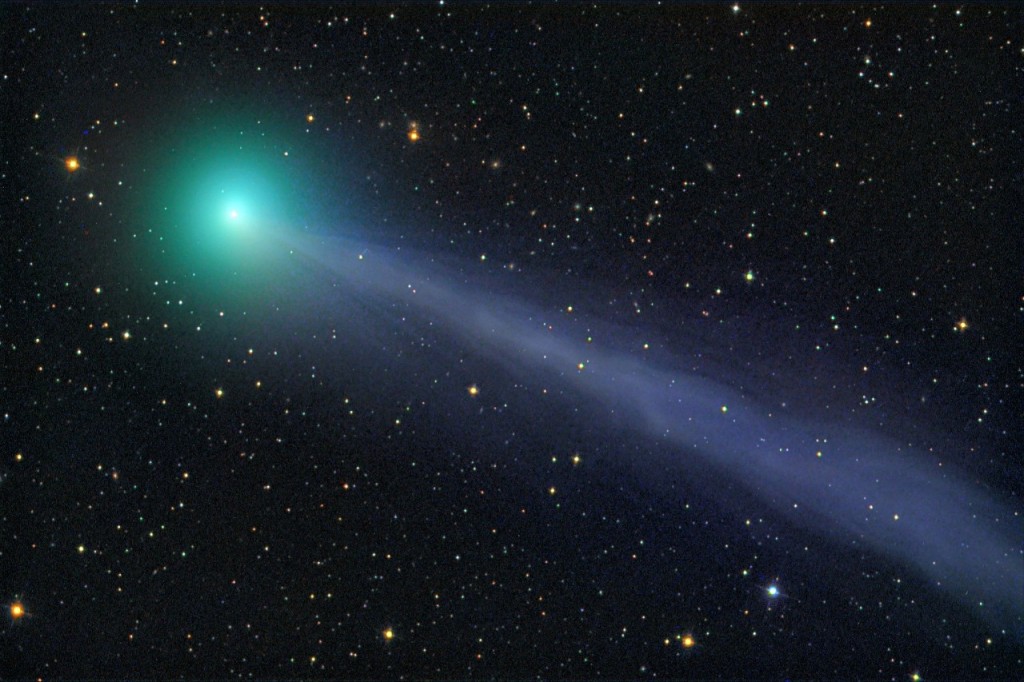 Credit: C/2006 M4 Swan 2006-10-26 8″/2.8 ASA M.Jäger
Credit: C/2006 M4 Swan 2006-10-26 8″/2.8 ASA M.Jäger
La C/2006 M4 SWAN è una cometa non periodica con orbita iperbolica. La cometa ha una denominazione che può trarre in inganno su chi l’ha scoperta: il nome deriva da quello di uno dei 12 strumenti a bordo della sonda SOHO: il Solar Wind Anisotropies, comunemente indicato con l’acronimo SWAN.
La cometa porta anche il nome non ufficiale di SOHO-1170. L’effettiva scoperta nelle immagini riprese da SWAN è merito di due astrofili, lo statunitense Robert D. Matson e l’australiano Michael Mattiazzo. La cometa fu scoperta inizialmente sulle immagini dello SWAN riprese a partire dal 20 giugno, fu ritrovata su un’immagine presa il 30 giugno con una macchina fotografica da Terra e infine confermata definitivamente da Robert H. McNaught il 12 luglio 2006.
Comet C/2006 M4 (SWAN) is a non-periodic comet discovered in late June 2006 by Robert D. Matson of Irvine, California and Michael Mattiazzo of Adelaide, South Australia in publicly available images of the Solar and Heliospheric Observatory (SOHO). These images were captured by the Solar Wind ANisotropies (SWAN) Lyman-alpha all-sky camera on board the SOHO.
The comet was officially announced after a ground-based confirmation by Robert McNaught (Siding Spring Survey) on July 12. Although perihelion was Sept 28, 2006, the comet flared dramatically from seventh magnitude to fourth magnitude on October 24, 2006, becoming visible with the naked eye. Comet C/2006 M4 is in a hyperbolic trajectory with an osculating eccentricity larger than during its passage through the inner solar system. After leaving the influence of the planets, the eccentricity will drop below 1 and it will remain bound to the solar system as an Oort cloud comet. Given the extreme orbital eccentricity of this object, different epochs can generate quite different heliocentric unperturbed two-body best-fit solutions to the aphelion distance (maximum distance) of this object. For objects at such high eccentricity, the Suns barycentric coordinates are more stable than heliocentric coordinates. Using JPL Horizons, the barycentric orbital elements for epoch 2013-May-14 generate a semi-major axis of about 1300 AU and a period of about 47,000 years.
Source/Continue reading → Wikipedia





















